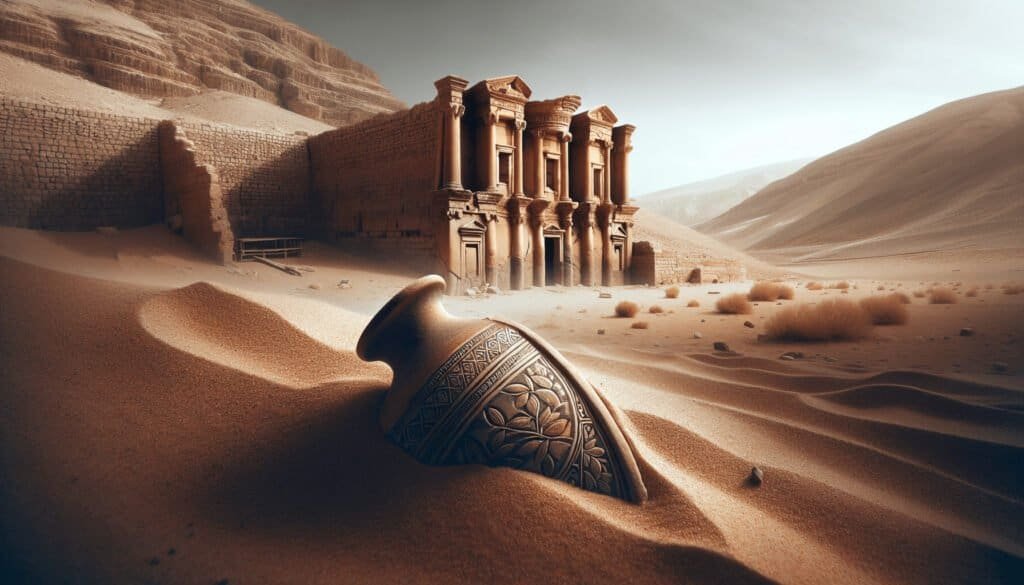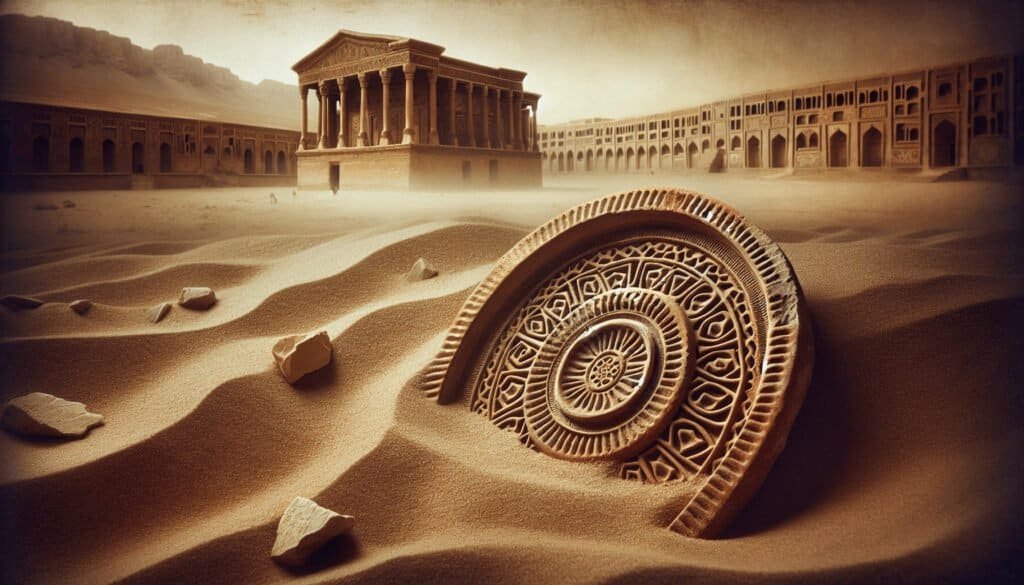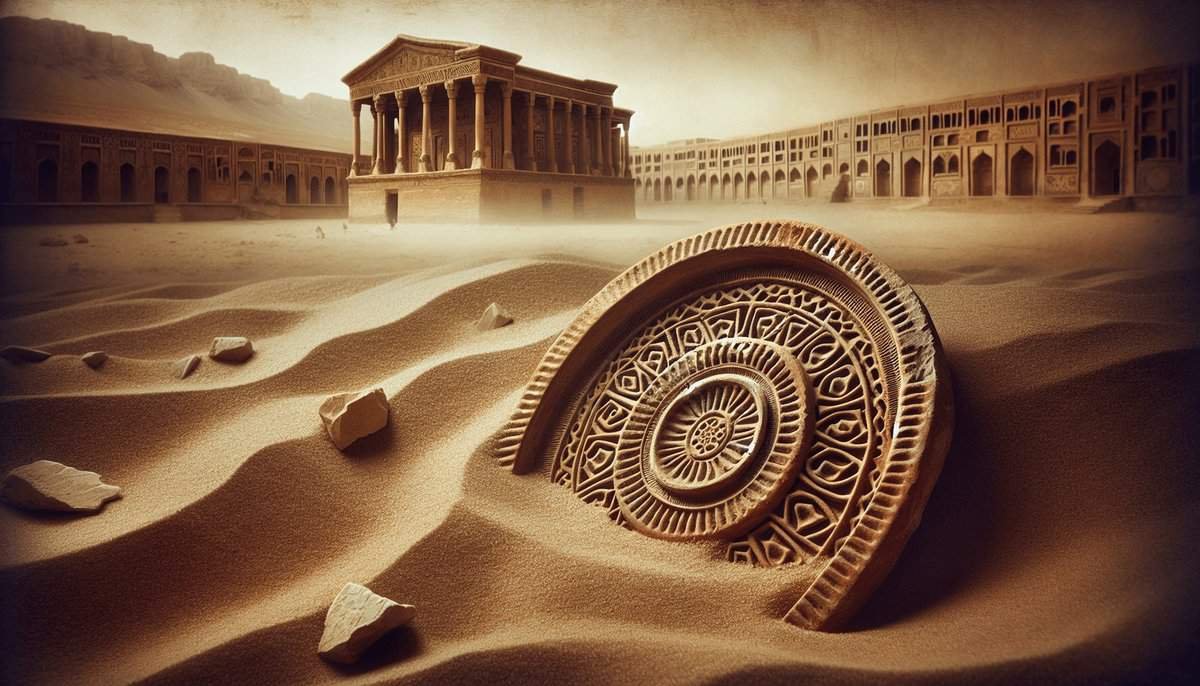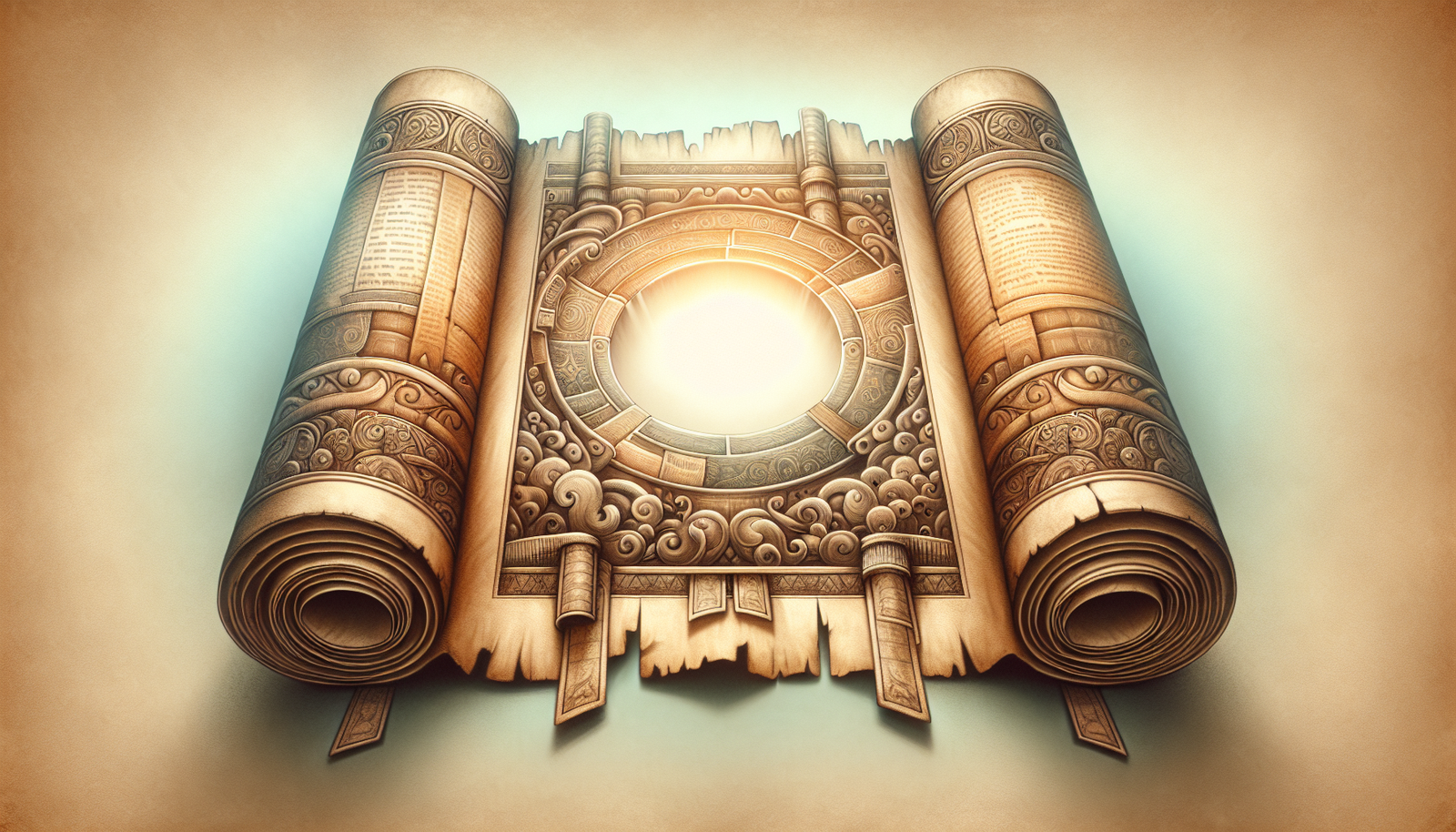What do you think about the interplay between ancient events and modern archaeological discoveries? It’s fascinating how remnants of the past can shape our understanding of history, isn’t it? In this piece, we’ll take a closer look at the legacy of a significant sandstorm in Jericho and how it intertwined with the Old Meeting Hall and pottery traces, shedding light on a captivating chapter of biblical archaeology.

Understanding the Sandstorm’s Significance
Sandstorms are often seen as merely a natural occurrence, but their impacts can be profound in places like Jericho. In the context of biblical history, one might wonder what a sandstorm could tell us about a civilization that flourished thousands of years ago.
Historical Context of Jericho
Jericho is one of the oldest continuously inhabited cities in the world, dating back to around 10,000 BCE. The city is mentioned repeatedly in historical and biblical texts, particularly in relation to the Israelites’ conquest of Canaan.
Biblical References: You might recognize Jericho from the story of Joshua, where the walls famously came tumbling down after the Israelites marched around them. This biblical account sets the stage for understanding the cultural and historical richness of the area.
Archaeological Importance: Jericho’s layered history makes it a treasure trove for archaeologists. Findings here not only help connect biblical narratives to tangible evidence but also draw threads to the broader ancient Near Eastern history.
The Sandstorm Encounter
Now, let’s turn our attention to that fateful sandstorm.
A Natural Catalyst: Sandstorms can reshape landscapes, literally and metaphorically. In Jericho, the sandstorm didn’t just alter the terrain; it also revealed relics from the past. It might surprise you to learn that such storms often unearth previously inaccessible archaeological sites.
Impact on Excavations: Archaeologists frequently find that sandstorms can expose pottery shards and building remnants, providing invaluable clues about daily life in ancient Jericho.
The Old Meeting Hall: A Center of Community Life
What was the Old Meeting Hall? To put it simply, it was a hub of social and spiritual life for the residents.
Architectural Features
The Old Meeting Hall stands as a testament to the architectural ingenuity of its time. Here’s a closer look:
Design Elements: The hall likely featured robust walls made from locally-sourced materials, which helped to withstand both the elements and the test of time.
Cultural Significance: This hall wasn’t just a building. It served as a gathering space for religious observances, community decisions, and social interactions.
Functionality of the Hall
Understanding how the hall functioned can give you insights into the community’s values and priorities.
Community Gatherings: Local leaders likely convened there to discuss community issues, further highlighting its role as a social backbone.
Religious Practices: The Old Meeting Hall would have been a site for rituals and celebrations, reflecting the spiritual life of the inhabitants.

Pottery Traces: Insights into Daily Life
You might be curious about what the pottery traces found in Jericho can reveal about the people who lived there.
Types of Pottery
Pottery serves as one of the most informative artifacts in archaeology.
Functional vs. Decorative: In your research, you might notice that not all pottery is created equal. There’s utilitarian ware, which was used for everyday tasks, and decorative pieces that reflected social status and artistic expression.
Material Composition: The variations in clay composition can inform archaeologists about trade networks and local production methods.
Usage and Significance
Each pottery piece tells a story about the lives of its users.
Culinary Practices: The types of pots and their designs often indicate what kinds of food were prepared and how they were served.
Social Hierarchies: Did you know that the way pottery is crafted can also indicate a society’s social structure? Fine, intricately designed pots may suggest a system that valued artistry and labor specialization.
Archaeological Findings: Evidence from the Sandstorm
The aftermath of the sandstorm has led to numerous significant archaeological findings.
Key Discoveries
Many archaeological digs have taken place in Jericho, but those unearthing evidence post-sandstorm offer a unique blend of old and new.
Uncovered Artifacts: Items discovered might include pottery shards, tools, and even food remnants. Each piece serves as a puzzle piece that helps to recreate the daily lives of Jericho’s ancient residents.
Dating Techniques: Advanced dating methods allow researchers to place these discoveries within a more accurate historical context, which only enriches the narrative being crafted around Jericho.
Analyzing the Finds
Let’s consider how archaeologists analyze their finds.
Contextual Importance: Each artifact is carefully cataloged, noting its location and relation to other items. This method helps piece together a broader understanding of community life.
Public Engagement: Today, many of these findings are being shared with the public, drawing in tourists and scholars alike. This eagerness to engage with history keeps the legacy of ancient civilizations alive.
Cultural and Theological Significance
As you sift through the historical layers, the cultural and theological significance of Jericho and its legacy becomes increasingly poignant.
The Role of Jericho in Biblical Narratives
Jericho holds a prominent place in the biblical narrative, surrounded by stories that shape both faith and culture.
Symbol of Triumph: The fall of Jericho is often seen as a symbol of divine intervention and victory. It reflects themes of faith, obedience, and God’s promise to the Israelites.
Cultural Legend: The stories surrounding Jericho have not only shaped religious beliefs but also inspired countless artistic and cultural expressions over centuries.
Educational Value Today
The patterns of life in Jericho provide a backdrop that informs modern understanding of community and relationship values.
Lessons from the Past: You might find it compelling that many teachings from ancient times still resonate—community, resilience, and enduring faith.
Connecting Generations: The findings at Jericho bridge the gap between ancient and contemporary life, ensuring that lessons from the past continue to be imparted to future generations.
Modern Perspectives on Ancient Contexts
Now more than ever, academic and casual readers alike are seeking to connect the dots between ancient stories and modern experiences.
Preservation Efforts
In light of increasing environmental challenges, efforts to preserve Jericho’s archaeological sites are critical.
Sustainable Tourism: As tourism grows, so does the need for sustainable practices that protect these ancient sites for future exploration.
Community Involvement: Local communities are becoming more involved in preservation efforts, acknowledging their historical heritage and the economic benefits that arise from responsible tourism.
Bridging Historical Gaps
With sophisticated technology and collaborative research, scholars are constantly working to fill in the gaps left by time.
Interdisciplinary Approaches: Today’s researchers are often employing techniques from anthropology, history, and archaeology to create a more comprehensive narrative.
Encouraging Public Interest: Engaging the public with accessible information is facilitating discussions that connect ancient narratives with modern values.
Conclusion: The Journey from the Past to the Present
In contemplating the legacy of the sandstorm in Jericho, remember that every finding contributes to a greater understanding of our shared human journey.
Summarizing our exploration, the Old Meeting Hall and the pottery traces uncovered after the storm serve as reminders of the complex social and spiritual lives of Jericho’s ancient inhabitants. They highlight the resilience of communities in the face of natural forces, while also inviting modern individuals to learn from those who walked this land millennia ago.
By looking ahead while keeping one eye firmly on the past, you ensure that the rich tapestry of human history remains vibrant and relevant. Ultimately, it’s this blend of history and contemporary perspectives that makes the study of places like Jericho not just an academic pursuit but a personal journey.



